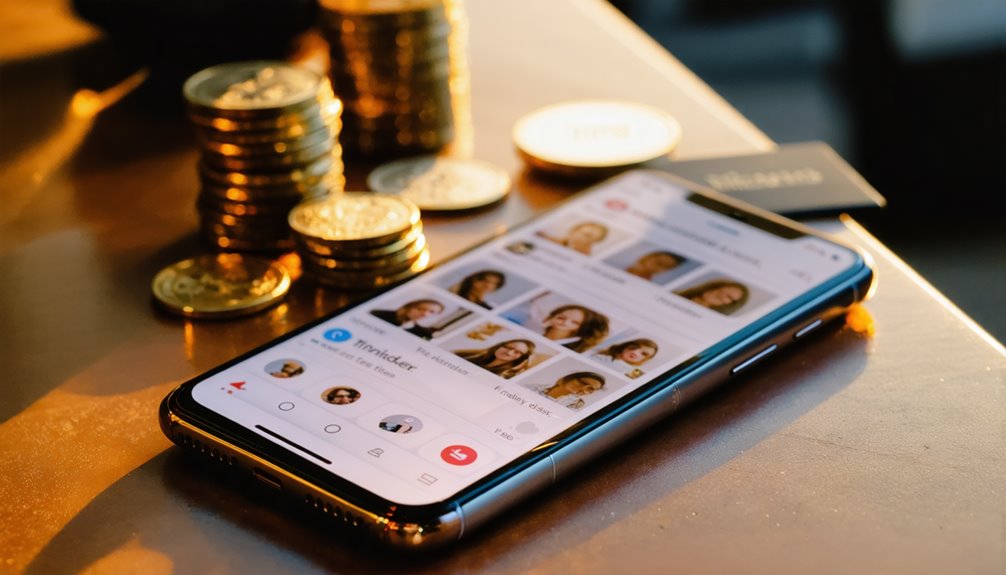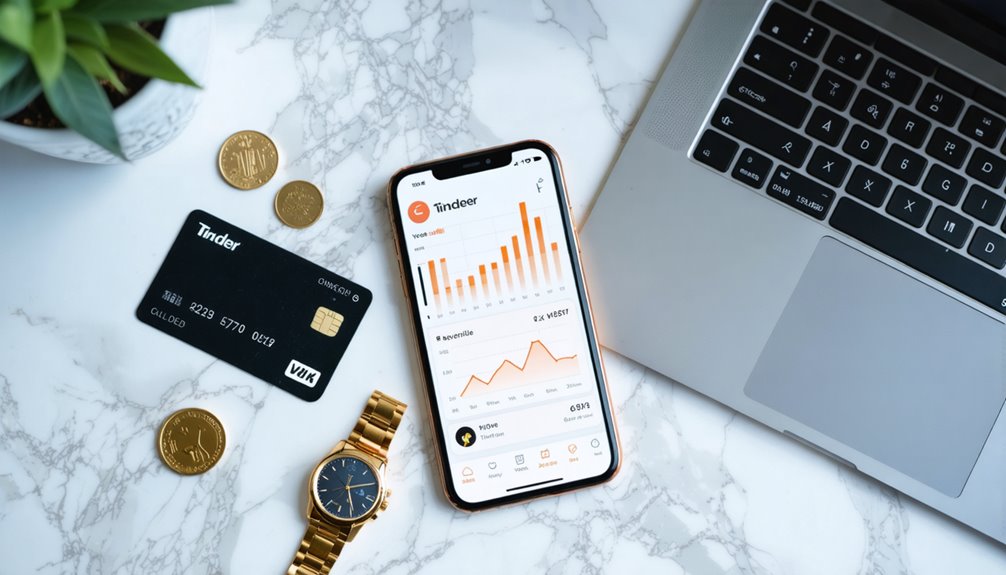How Much Does Tinder Cost? A Complete Pricing Breakdown

Tinder’s pricing isn’t one-size-fits-all, and that’s exactly why we’re breaking it down. We’ll compare the free tier to Plus, Gold, and Platinum, outlining features like unlimited likes, Passport, Rewind, “Likes You,” and priority likes. We’ll also explain age-based discounts, regional differences, and how monthly vs. longer plans affect cost. Finally, we’ll share practical ways to save—like timing promotions and choosing the right tier—so you pay less for what you actually use.
What You Get for Free on Tinder

Often, the free version of Tinder gives us everything we need to start swiping and matching. We create a profile, upload photos, and write a bio. We swipe right or left, get daily Top Picks, and message mutual matches without limits. We can adjust basic discovery settings like age range and distance, but not advanced filters. We don’t get Read receipts, profile boosts, Super Likes in bulk, or premium rewind controls. There’s no Location spoofing, so discovery relies on our real area. We can see Likes only when they appear as matches. Free users still build momentum with consistent activity.
Tinder Plus: Price and Features

While the free tier covers the basics, Tinder Plus upgrades our swiping with key conveniences at a lower price than Gold or Platinum. We typically see Tinder Plus cost vary by region, age, and promotions, but it’s the most affordable paid option. Core features include unlimited likes, Passport Access to swipe anywhere, and Rewind to undo the last swipe. We also get five Super Likes daily and one monthly Boost to Boost Visibility in crowded markets. Ads are removed, and we can hide our age and distance. For budget-minded users who want flexibility and reach, Plus delivers practical value.
Tinder Gold: Price and Features

Stepping up from Plus, Tinder Gold adds premium discovery tools and a higher price tag that varies by region, age, and ongoing promos. We typically see monthly rates higher than Plus, with discounts on 6- and 12‑month plans. Gold keeps unlimited likes, rewinds, and passport access, and adds “Likes You,” which shows who swiped right before we match.
We also get Top Picks with daily curated profiles, and profile controls that boost visibility through extra Super Likes and one monthly Boost. Gold removes ads, includes priority likes, and lets us fine‑tune discovery settings. Value depends on how often we match and message.
Tinder Platinum: Price and Features
Although it sits above Gold, Tinder Platinum commands the highest subscription price, with monthly, 6‑month, and 12‑month tiers that fluctuate by age, region, and promotions. We pay for a faster path to matches and added control. Platinum keeps all Gold perks, then layers benefits that push our profile ahead and clarify interest.
1) Priority likes: our likes land near the top of someone’s queue, improving visibility and potential match speed.
2) Message before match: we can add a note with a Super Like to stand out immediately.
3) Read receipts: optional toggles show when messages are seen, aiding follow‑up timing and pacing.
Age-Based Pricing Explained
Let’s clarify how Tinder prices plans by age. We’ll outline how under-30 discounts work and what changes once users hit 30. We’ll also note how these price tiers affect overall value for each group.
Under-30 Discounts
While Tinder’s plans look the same on the surface, pricing often shifts based on age, with users under 30 typically paying less for Plus, Gold, and Platinum. We see lower monthly rates positioned as student discounts or broader youth perks, though availability varies by region and verification. These savings don’t change features; they simply reduce the bill for the same tiers.
1) Expect tier gaps: Plus is cheapest, Gold midrange, Platinum highest—each discounted for eligible under-30 users.
2) Verify age: ID or platform checks may be required to access pricing.
3) Watch promotions: rotating student discounts and bundles can stack with youth perks.
30+ Premium Rates
Because Tinder uses age-based pricing, premium rates can vary widely for the same Plus, Gold, and Platinum tiers. We’ll see lower prices for users under 30 and higher figures for those 30 and up, even within identical subscription tiers. That makes a straightforward cost comparison tricky.
We recommend checking prices in-app for your age bracket and billing cycle. Monthly plans typically cost more per month than quarterly or annual options, but discounts vary. Regional pricing and promotions add another layer. Evaluate features you’ll actually use—Likes, Boosts, and profile visibility—then compare effective monthly costs across terms to identify the best value.
Regional Price Differences
Although Tinder’s core features are consistent worldwide, its subscription prices vary by country, currency, and local purchasing power. We see clear regional trends driven by app store taxes, exchange rates, and income levels. Prices can shift quickly with currency fluctuations, so what feels affordable in one market may be premium elsewhere. To compare fairly, we should convert to a common currency and note local taxes or fees.
- We check in-app prices while traveling; regions often show different tiers.
- We monitor exchange rates; sudden swings can change monthly costs.
- We compare net prices after taxes to gauge true value across countries.
Monthly vs. 6-Month vs. 12-Month Plans
Even if the features are the same, the commitment length changes what we pay per month and how flexible we are. Monthly plans maximize payment flexibility and allow monthly cancellations, but they cost more per month. Six- and twelve-month terms lower the effective rate through commitment discounts, yet they lock us in longer and follow stricter renewal policies. We should confirm start dates, auto-renew settings, and refund rules before committing.
| Plan Length | Practical Takeaway |
|---|---|
| Monthly | Highest price, easiest monthly cancellations |
| 3–6 Months | Lower rate, moderate commitment |
| 12 Months | Lowest rate, least flexibility |
| Billing | Prepaid terms, auto-renew defaults |
| Management | Adjust renewal policies, track dates |
Which Tier Offers the Best Value
Value hinges on how often we match, message, and travel. For most of us, Plus covers essentials—unlimited likes and rewinds—at the lowest cost. Gold adds Likes You and priority placement, useful if we rely on faster feedback. Platinum enables message-before-match and prioritized likes, best for heavy users in dense markets. Our value comparison depends on how much we leverage match algorithms and location patterns.
- Light users: Plus offers the best value; core features maximize limited swiping.
- Active daters: Gold shines when Likes You reduces time-to-match.
- Power users: Platinum pays off where competition is high and messaging speed matters.
Tips to Save on Tinder Premium
Often, we can cut Tinder Premium costs by timing upgrades around promotions, checking in-app deals, and choosing longer billing cycles for lower monthly rates. We also compare web pricing to app-store pricing, since fees can differ. Let’s use subscription hacks: set calendar reminders to cancel before renewal, pause when we’re not dating, and stack gift cards or cashback. We avoid add-ons unless they deliver measurable value. We refine swipe strategies to reduce wasted Boosts and Super Likes, focusing on peak hours. We test a month before committing long term, and we review Plus vs. Gold vs. Platinum against our goals.
Conclusion
We’ve covered Tinder’s free basics and how Plus, Gold, and Platinum stack up on features and price. Since costs vary by age, region, currency, and billing length, we should always check in-app pricing before upgrading. Compare monthly vs. longer plans, weigh perks like Likes You, Rewind, and Passport, and pick the tier that matches our goals. To save, watch for promos, consider under-30 discounts, and time purchases around sales. Smart timing beats overpaying.
